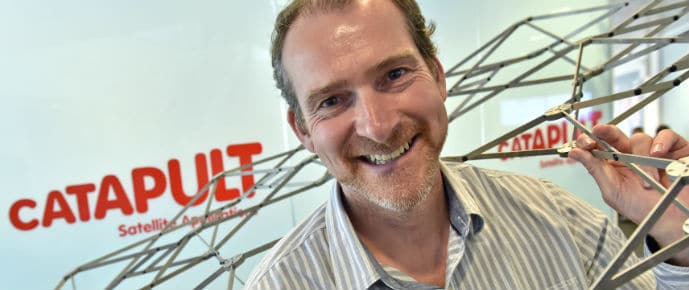The UK startup collaborated with Professor Zhong You of Oxford University - an expert in deployable closed kinematic chain structures and origami folding - to develop the technology.
Together they have created structural designs that use ‘shape memory’ materials made up of fibres and resins that unfurl in a controlled way, similar to natural structures such as leaves.

OSS is focusing on three specific areas: deployable panels, large deployable antennas, and flexible composite boom systems. Products developed so far include the Astrotube and Astrotube Max, two retractable booms that can be extended three metres and 15 metres from a spacecraft respectively.
According to OSS, the booms have a significantly reduced number of moving parts, and consequently a lower risk of mechanical failure. Once they have unfolded from the satellite structure, the booms can then be used to position other parts of the payload, such as antennas or solar panels.
The company has also developed a four metre parabolic antenna which it claims is lighter in design than others of its type and requires a single motor to deploy.
“It uses a ring architecture based on a patented linear sliding bearing,” said Mike Lawton, founder and CEO of Oxford Space Systems. “The moving hinges let the structure ‘breathe’ so it can recover from any potential jamming and distortion.”
The company has benefited from the support of Innovate UK, the Satellite Applications Catapult and the Harwell Launchpad competition, growing from one employee to more than 10 in under two years. It is expecting second-round funding in 2015.
In March, OSS was selected by the UK Space Agency to fly its AstroTube Boom on a 3U cubesat mission, set to launch in Q2, 2016.




Nanogenerator consumes CO2 to generate electricity
Nice to see my my views being backed up by no less a figure than Sabine Hossenfelder https://youtu.be/QoJzs4fA4fo